Table of contents
What is curd?
Curd is a traditional dairy dessert of the Basque and Navarrese gastronomy, where it is usually served with honey and is also known as mommy Authentic curd is made with sheep's milk, which is what gives it its characteristic flavor, and a few drops of rennet are added to it. Its texture is creamy and is ideal to serve as a dessert at lunch or dinner.
Curd is one of the most common desserts at Karlos Arguiñano's house. He would like to share his recipe, since it is very easy to make.
We explain how Karlos Arguiñano prepares the curd and everything you need to know to succeed with this dessert.
Ingredients (for 4 people):
- 600 ml sheep's milk (pasteurized)
- 12 drops of liquid rennet from pharmacy
- honey
- mint leaves (for decoration)
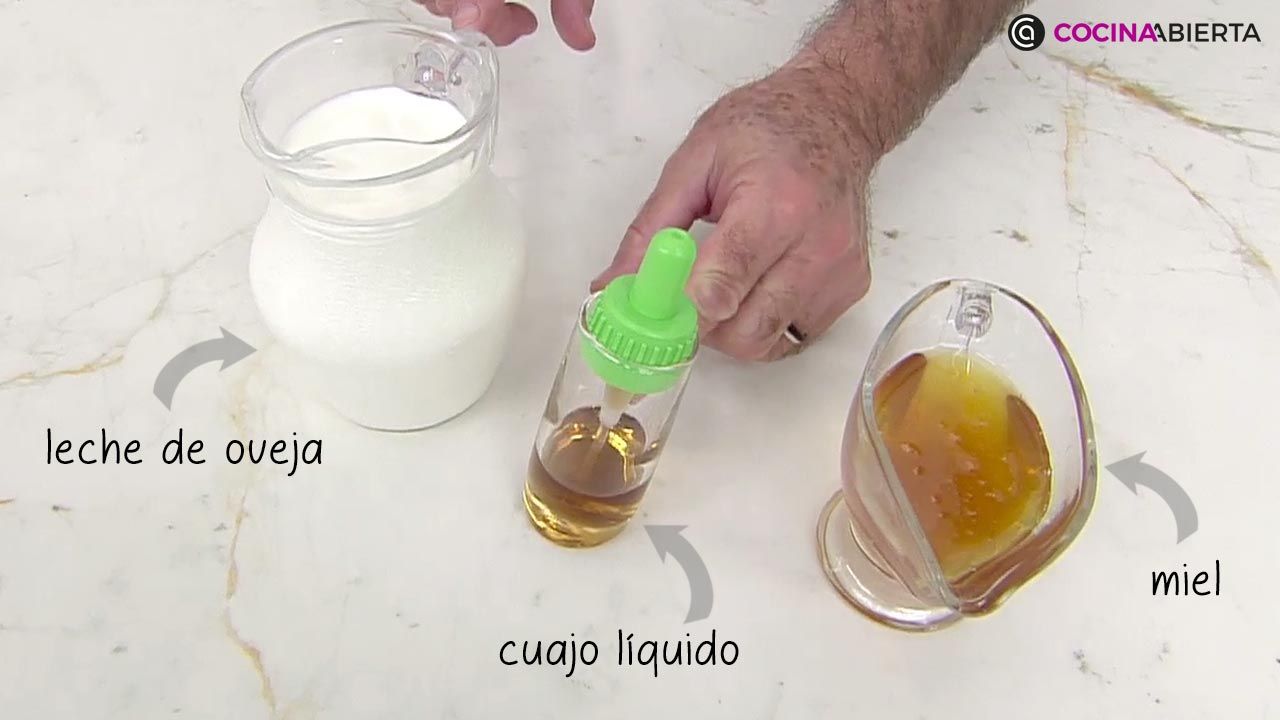
How to make homemade curd:
First, pour the sheep's milk We recommend that you use a cooking thermometer to control the temperature, as it is important in this recipe. When the thermometer reaches 50ºC, remove the pan from the heat. If you have overheated it, also remove the pan from the heat and wait until it goes down to 50ºC.
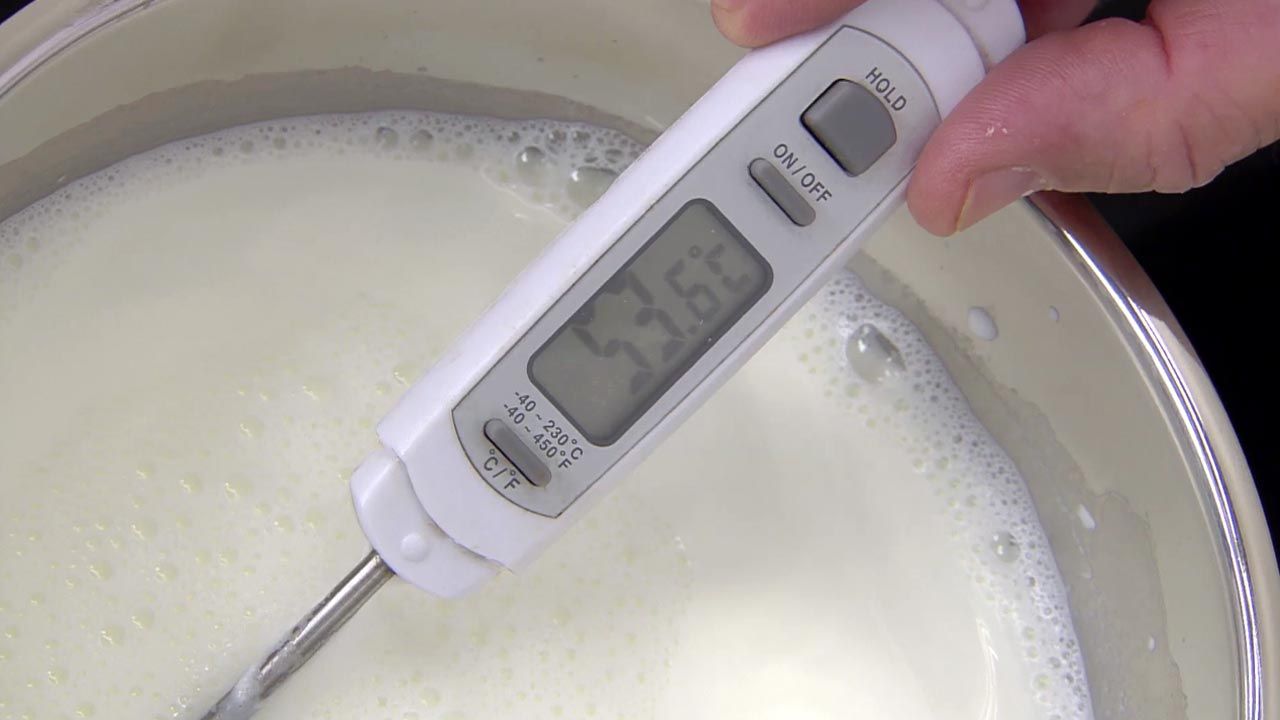
On the other hand, prepare 4 containers and put 3 drops of rennet You can buy rennet at the pharmacy or in the supermarket (in the refrigerated section).
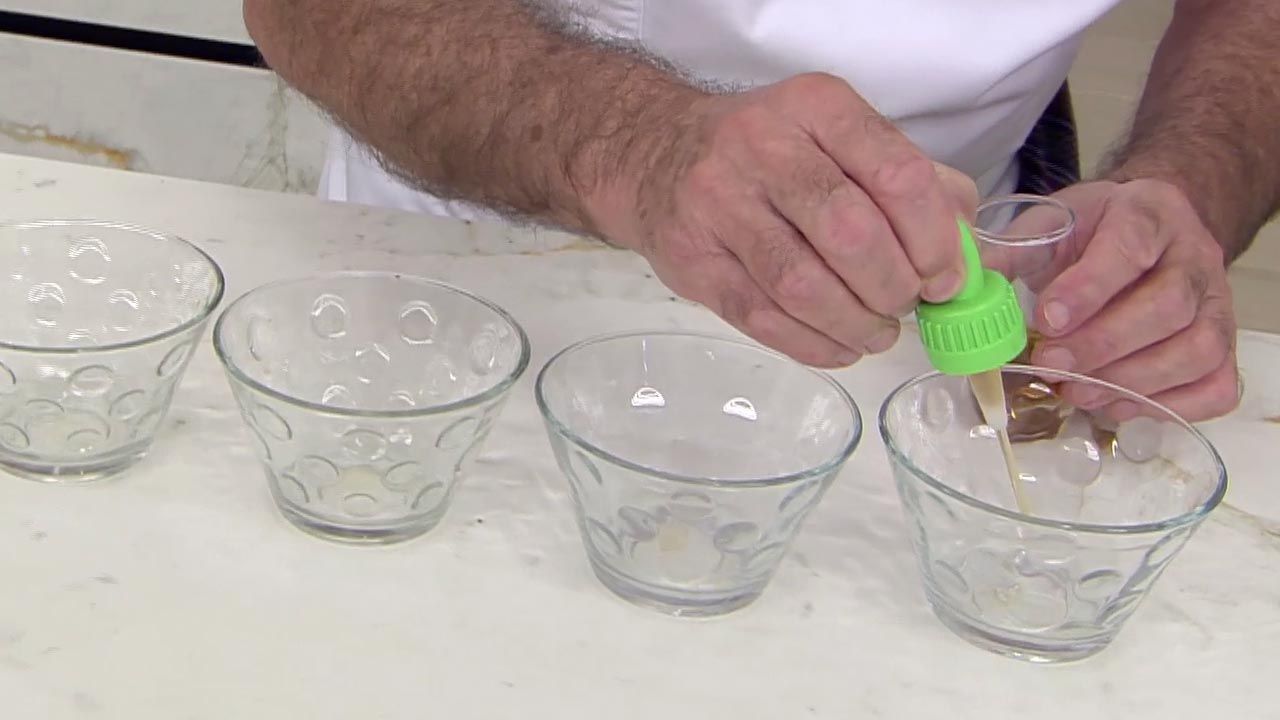
Next, divide the hot milk among the 4 containers (remember that it must be at 50ºC). Wait for the milk to cool and curdle. without stirring.
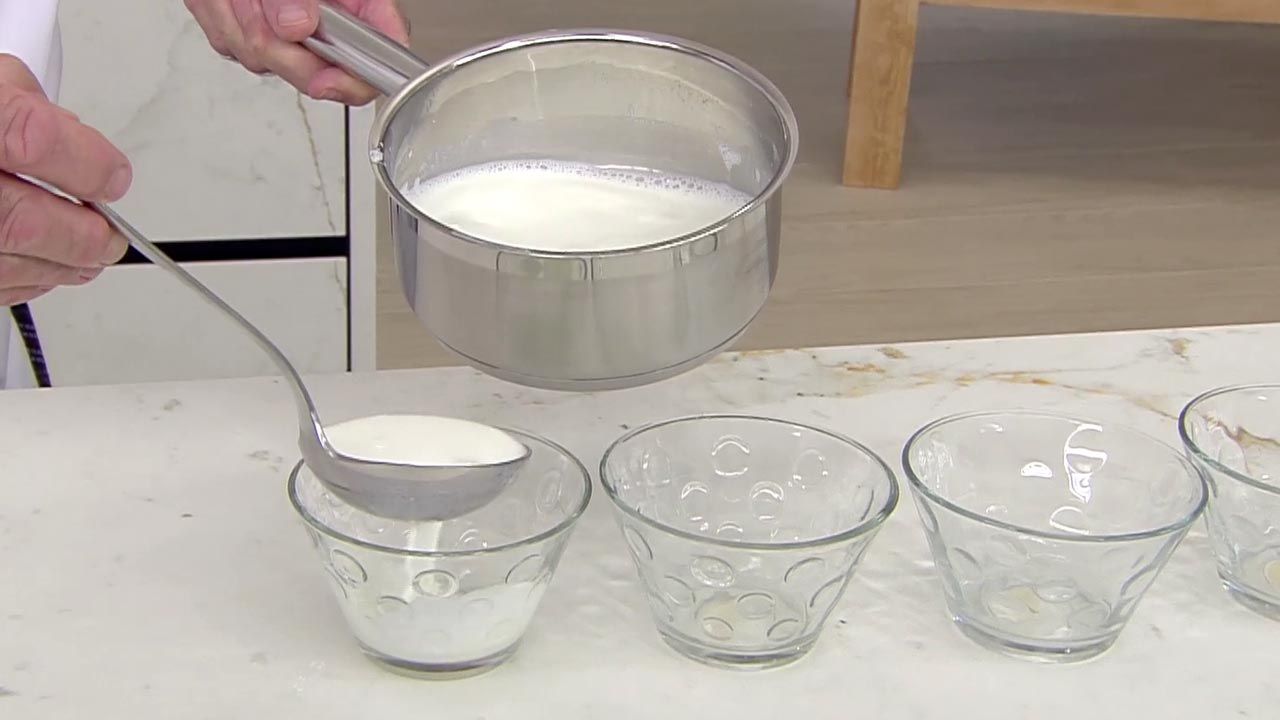
The curds are ready! You can add a little honey Serve the homemade curds with honey.
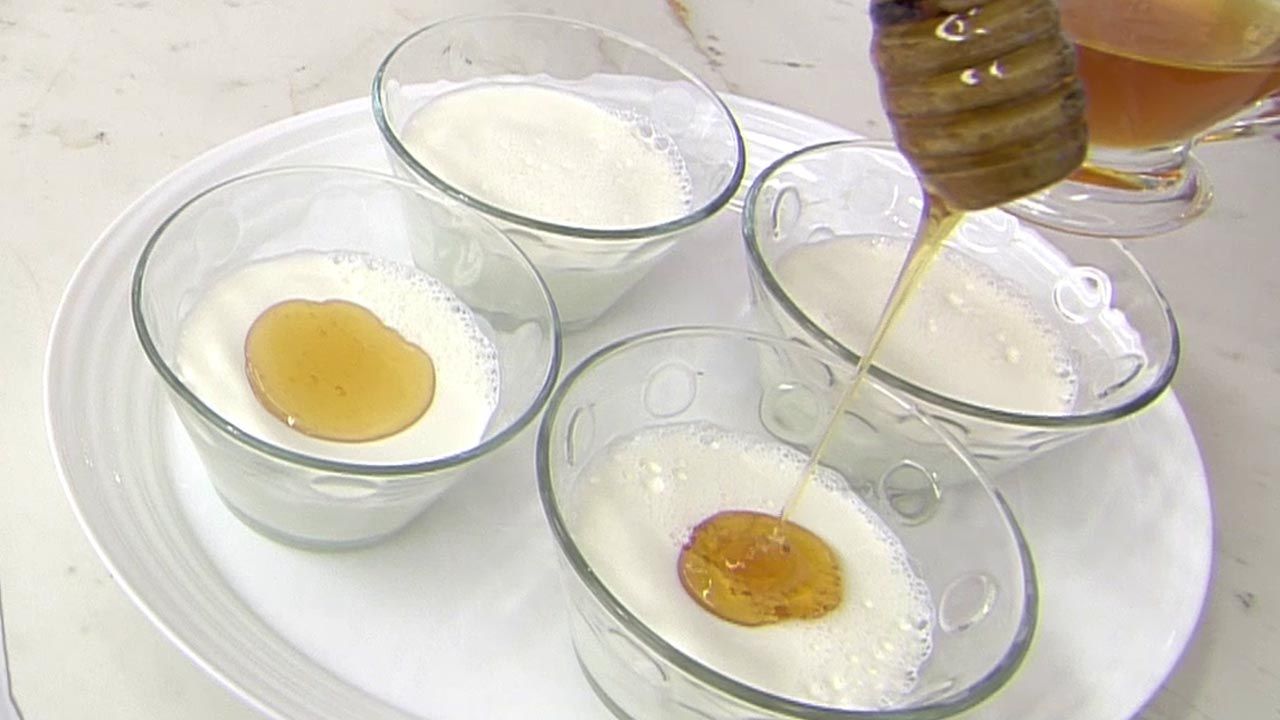
If you are not going to serve the curds at the moment, cover them tightly with plastic wrap or a silicone lid and put them in the refrigerator. Homemade curds can be conserved When you are ready to eat them, just take them out of the refrigerator and add a little honey if you wish.
In addition, you can also use curds as a base to prepare other desserts, such as this delicious curd tart by Eva Arguiñano or the curd and strawberry tart proposed by chef Bruno Oteiza.
What you need to make authentic traditional curd:
1. Kitchen thermometer
For a perfect curd, it is important to control the temperature They are very economical and can be used in different preparations of pastries and sauces or to find the perfect point of meat.
Liquid rennet
Rennet is a coagulant that can be purchased in pharmacies and supermarkets in liquid form. It can be of animal, vegetable, microbial or synthetic origin and its composition is as follows causes the milk to coagulate The rennet is used to make curds or homemade cheeses.
3. Earthenware containers
On this occasion, Karlos Arguiñano serves the curds in glass containers, but if you want to present your curds in the most traditional way, you can't miss the characteristic earthenware glasses.

Questions and answers about curd:
What are the benefits of curd?
The curd has similar nutritional values to the milk from which it is made, in this case sheep's milk. Curd is rich in protein of high biological value, calcium B vitamins, B group vitamins and vitamins A and D .
However, since it is made from sheep's milk, its fat content (mostly saturated fats) is almost double that of curds made from cow's milk. Therefore, if you want to prepare some lower fat curds You can substitute cow's milk for sheep's milk.
Curdled milk, on the other hand, is more digestive than liquid milk, so this dessert is suitable for people with a delicate stomach.
As for allergens, the curd is not suitable for people who cannot consume lactose.
How is curd served?
You can eat the curd directly when you finish making it or you can store it in the refrigerator and serve it cold. Curd can be eaten alone or sweetened with honey, agave syrup or sugar. We suggest serving it with chopped walnuts on top, a combination that never fails.
What is the difference between cheese and curd?
Curd and cheese differ mainly in the following ways processing and texture Curd is made by adding rennet to hot milk and has a creamy, smooth texture. Cheese, on the other hand, is made in the same way but is then cooked and the whey (the liquid) is removed, so it has a harder texture than curd.
Why doesn't the milk curdle?
One of the main problems that arises when making homemade curd or cheese and that most of you consult us about is that milk does not curdle There may be several reasons why it does not set.
Remember that it is important to respect the temperature in the manufacturing process and the amount of rennet If the temperature in your kitchen is low, the milk will cool easily and you will have to take this into account to keep it at 50ºC before adding it to the container.
If you're doing this right and it still doesn't set, it may be due to the milk quality Try making curds with a different brand of milk.

